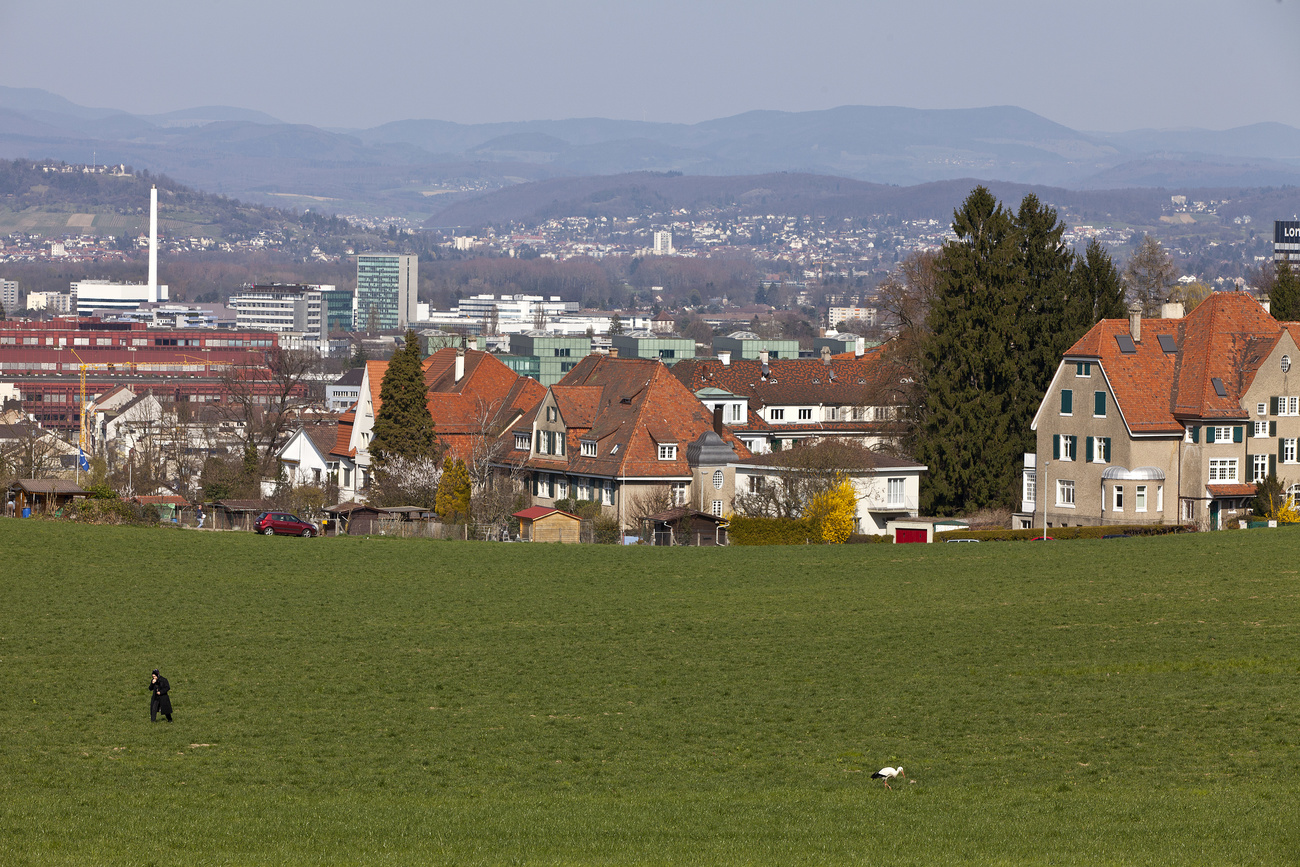
How to squeeze millions more people into Switzerland

The Swiss population is expected to increase from 8.7 million today to over ten million inhabitants in 2050. Does the small Alpine nation have room for all these people? We look at the numbers.
One image of Switzerland is of mountain landscapes, lakes, cow pastures and cheeseries. It is also a wealthy, modern country in which three quarters of the population live in urban areas.
What is the relationship between rural idyll and urban life? Do the Swiss live close together by international comparison? And how is the population in Switzerland geographically distributed? We use data to get to the bottom of these questions.
Usually when you want to find out whether something in one country is big or small, good or bad, strong or weak, you use other countries as a benchmark.
There are at least two basic questions that you have to ask yourself to make a meaningful comparison. First: Which key figure(s) are you comparing? Second: Which countries are you comparing with?
Population density is a suitable indicator. It measures population in relation to the area they inhabit. This is easy to calculate because most countries know both their surface area and the number of inhabitants.
The availability of such data allows for global comparisons. The following graphic compares Switzerland to neighboring countries and other geographic areas.
Europe has a high population density compared to the rest of the world. And Switzerland has significantly more inhabitants per km2 than the EU average.
However, in South Asia, particularly India, people are packed much closer together. Switzerland’s large neighbor Germany has a higher population density than its smaller neighbor and there are a similar number of people per km2 in Italy.
There are geographical, historical and cultural similarities with neighbouring countries. But is there a significant change when Switzerland is compared with countries of a similar size?
When comparing countries with a similar surface area, Switzerland is among the most densely populated. In Europe, however, Belgium and the Netherlands have significantly more inhabitants per km2.
There is a clear difference in the space available for habitation between the Netherlands and Belgium, on the one hand, and Switzerland on the other. While the Benelux countries are very flat, Switzerland is known for the Alps.
The topographical conditions in Switzerland, with its mountains and lakes, means that large swathes of the country cannot be occupied. “If you compare the area that can be settled in by people, Switzerland is rather densely populated,” says Damian Jerjen, Director of EspaceSuisse, the Swiss Association for Spatial Planning.
A closer look at Switzerland shows that space for building and habitation is a rare commodity in the mountains. This is evident in the distribution of the population. In the following map – coloured according to population density per municipality – mountain areas are clearly more sparsely inhabited.
The most densely populated areas (in darker colours) can be found around larger cities. The agglomeration around Zurich, which extends well into neighbouring canton Aargau, is particularly striking.
In the lower map, the municipalities are coloured according to the change in population growth between 2010 and 2018. The light blue areas record a reduction in inhabitants, revealing a drop in population among alpine communities.
Then where are people going to? The greatest population growth can be seen not in big cities, but in the areas between them. The most obvious example is between Lake Geneva and Lake Neuchâtel.
Generally speaking, the greatest growth took place where there was still space available; not in cities or their suburbs but in larger villages beyond them. A classic case of urban sprawl.
The answer to this phenomenon is more compact building within cities. “In terms of spatial planning, growth should be directed towards areas that are already well developed,” said Jerjen. In the next 15 to 20 years, the Swiss population will primarily grow in the three large metropolitan areas of Zurich, Basel and Geneva/Lausanne, which will become denser. But is there still room for growth in city centres? If you look abroad, the answer is clearly yes.
It is not necessary to compare Switzerland with city-states like Singapore or Hong Kong to reach this conclusion. Swiss public broadcaster SRF has calculated how many inhabitants Switzerland could squeeze in if cities were as densely populated as the Groot-Amsterdam region. The findings suggest that Switzerland would have space for over 17 million inhabitants – around twice as many as today.
“This is a good illustration of what is possible,” says Jerjen, who is convinced that “it won’t become too tight in Switzerland for the foreseeable future.” But he adds that it is important to consider quality of life in such compressed spaces. This means thinking about green and open spaces, for example.

In compliance with the JTI standards
More: SWI swissinfo.ch certified by the Journalism Trust Initiative





























You can find an overview of ongoing debates with our journalists here . Please join us!
If you want to start a conversation about a topic raised in this article or want to report factual errors, email us at english@swissinfo.ch.